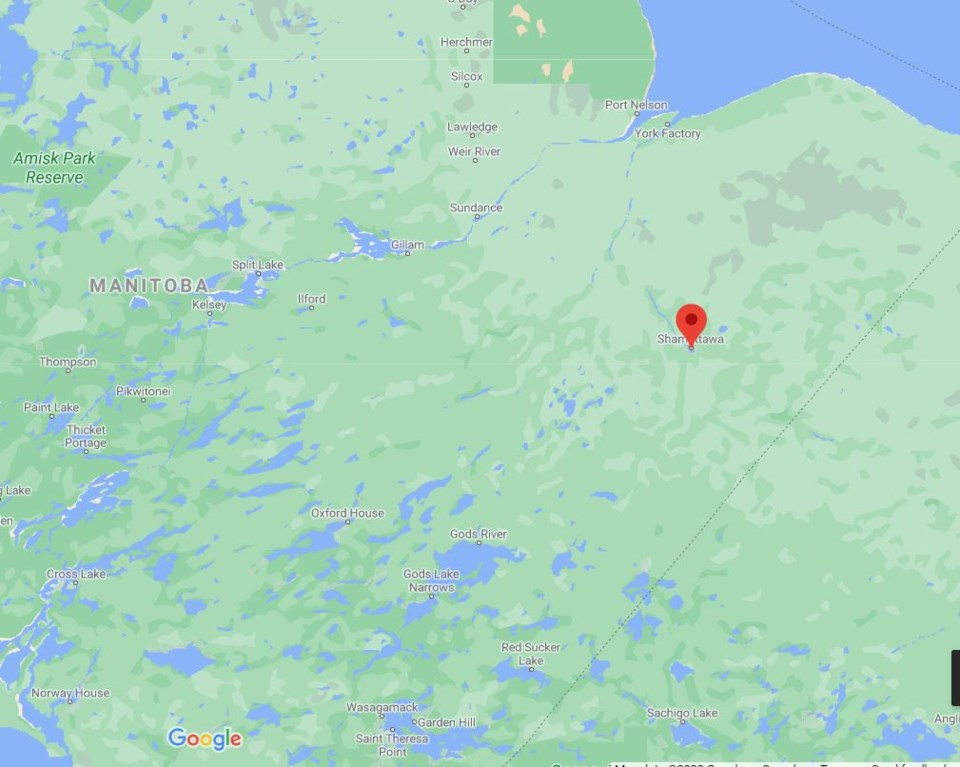Northern Manitoba NDP MP Niki Ashton said Dec. 8 that the federal government’s response to the COVID-19 outbreak in Shamattawa First Nation is “grossly inadequate.”
Ashton, whose Churchill-Keewatinook Aski electoral district includes the remote, fly-in First Nation, located about 360 kilometres east of Thompson near the Manitoba-Ontario boundary, says there are now 264 positive tests for the virus in the community of about 1,300 people.
“Shamattawa is dealing with a devastating outbreak of COVID-19 that is getting worse by the hour,” she said in a press release. “There is the very real concern that COVID-19 has spread throughout the community. This is one of the worst COVID-19 outbreaks in Canada. This is nothing less than a nightmare for the people of Shamattawa.”
Ashton said the federal government’s response, which so far has been limited to deploying six members of the Canadian Rangers reserves who were already in the community and sending five members of the Rd Cross to the First Nation are not enough.
“The community is making it clear much more has to be done,” she said. “Outside specialized military help is needed now.”
Ashton wants the federal government to evacuate vulnerable people such as elders and those with tuberculosis to Winnipeg and to help the community enforce public health orders to limit the virus’s spread.
Shamattawa is also a major area of concern for Manitoba Keewatinowi Okimakanak (MKO) Grand Chief Garrison Setteee, whose organization represents 26 Northern Manitoba First Nations. The problems plaguing the community are similar to those in many other First Nations, including inadequate housing and plumbing that make it difficult to self-isolate.
“In some communities, we have heard of people covering bedroom doors with plastic to create a space where someone can self-isolate away from the rest of their loved ones,” he said in a Dec. 7 press release. “Many homes only have one bathroom so unfortunately, in some cases people are using pails within their rooms so they can keep themselves separated from others in the homes. This is extremely disappointing and impacts people’s overall dignity and safety. We are aware there is a large demand for alternative isolation accommodations and there is a need to work to continue to create more spaces for isolation.”
Settee also said that the federal government must move quickly to address the housing shortage in places like Shamattawa, which have less than two months from about January to March to economically move building supplies into their communities via temporary winter roads.
The grand chief also urged the federal government to give First Nations people priority when the COVID-19 vaccine starts being administered.
“First Nations people face ongoing issues related to poverty that absolutely impact our health status,” said Grand Chief Settee. “It is for these reasons that First Nations people must be prioritized when the provincial and federal governments are determining who will receive the vaccine on a priority basis. We are urging both the province and feds to include us and create a seat for First Nations leadership and expertise at the tables they have created for developing vaccine rollout plans. Unfortunately, First Nations leadership in Northern Manitoba have not been included in these discussions to date. It is imperative that all levels of government work together and have ongoing and clear communication so we can mitigate the impact of this deadly virus on First Nations people living in Northern Manitoba.”
Ashton said time is of the essence when it comes to dealign with Shamattawa’s COVID-19 outbreak.
This is matter of life and death for a community that already faces a spread of tuberculosis, high rates of diabetes, overcrowded housing, and isolation,” she said. “This is a community that has virtually no health resources to deal with one of the worst COVID-19 outbreaks in Canada.”




